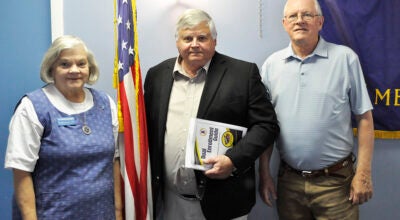Electric facility meets opposition
Published 10:43 pm Thursday, January 28, 2010
A request to rezone some property behind the Sherwin Williams Paint Store, the Chevron Food Mart and the old Barnhills Restaurant site in Troy was denied by the Troy City Planning Commission Thursday after meeting opposition.
Christopher Rose, who presented the request to the board, was interested in building an electrical distribution facility at the site.
But several of the nearby residents, including four homeowners, were present at the meeting to voice their concerns of the re-zoning.
One potential problem discussed was how the business would be accessed. Residents were worried that Lakeside Drive, a narrow access road that runs parallel to and connects with U.S. Highway 231, would be the primary right-of-way used by the facility.
Rose said he wanted to work with the neighbors and proposed an alternate means of accessing his business but residents were skeptical.
Issues of safety were expressed with one resident stating her children and pets frequently played in the area and the increase in traffic could pose a danger. The hazard of Highway 231 traffic was also noted.
Also of concern to residents was the possibility of aesthetic consequences. Rose said he would take care to plant vegetation and trees to block the view of the building, but residents were unconvinced.
After a lengthy talk the commission voted against the request and at the request of commission Chairman Bill Hopper, each agreeing member gave a reason for their vote.
Another rezoning request regarding a portion of land in the College Heights Subdivision that stretches behind a portion of the west side of George Wallace Drive met some resistance as well.
Walter Snell represented Robert Floyd in an effort to allow for the development of 10 patio homes near Lee Ave. Homeowners John and Ann Lester own a residence on George Wallace Drive and were concerned the rezoning could lead to unwanted problems.
“Our concern is a whole bunch of houses going in back there,” Ann Lester said. Lester explained that development of the land adjacent to the back yard of her property could lead to diminished property values and a loss of privacy.
But Snell said that the land was considered wetland and would not be developed.
“Monetarily it’s impossible to develop,” he said.
Snell said that the only reason the land in question was included in the rezoning was to abide by city zoning policies.
“The city doesn’t like to do spot zoning,” he said. “You try to use natural boundaries.”
In this instance, Snell used a creek that runs west of the Lesters’ property as part of the boundary. After the Commission voted to carry the request, the Lesters asked to be kept updated on any changes or developments of the land.





